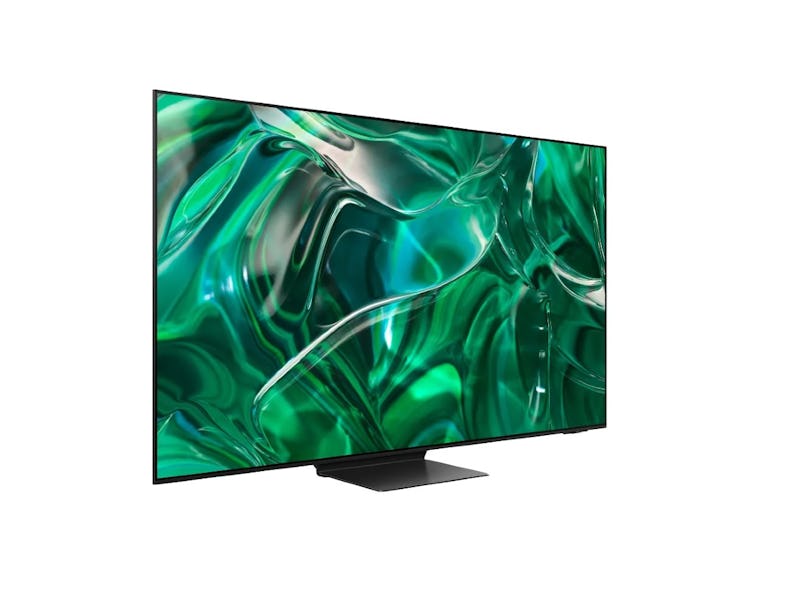Samsung's new TV could be one of the brightest OLEDs yet
The S95C is bigger, brighter, and... did we mention that it's really big?

Technology isn’t always better when it's bigger, but TVs are their own animal. And with the S95C, Samsung’s newest Quantum Dot OLED TV, the cries for bigger and brighter displays have clearly been received.
Samsung’s latest addition to its QD-OLED lineup, revealed at CES 2023, measures a formidable 77 inches, making it the biggest option in the company’s current QD-OLED offerings, and surpassing the now last-gen S95B which comes in 55-inch and 65-inch options.
Perhaps even more important than the size of the S95C is its brightness. Samsung says the TV tops out at 2,000 nits of brightness, making it a frontrunner amongst competing OLED TV purveyors.
Even Samsung’s most formidable competitor, LG, could get eeked out by the S95C. LG says its next-gen OLED TVs will be “70 percent brighter” than the last generation which offered the G2, a top-of-the-line OLED with 1,000 nits of brightness.
Keep in mind, tests of the S95C, while convincing, are still early. As noted by The Verge, YouTuber HDTV Test used a $7,000 handheld spectrometer and clocked the TV at more than 2,000 nits.
Sound-wise, the S95C will come with a 70-watt 4.2.2-channel Dolby Atmos speaker. Not a bad choice if you’re looking to skip buying an additional soundbar or home theater setup.
Thin and bright is the name of the game when it comes to Samsung’s new QD-OLED S95C.
Why brightness matters — So what’s the big deal with brightness? The short answer is it all comes down to technological compromise.
OLED displays, while great at helping produce TVs that are almost impossibly thin and energy efficient, tend not to perform as well in delivering brighter pictures when compared to LED — the two technologies use different backlighting methods which limits brightness.
That means, while OLED TVs deliver a form factor that’s ideal for most consumers, it can be harder to deliver the same contrast in HDR due to the lack of very bright brights. The problem is that OLED TVs are still the prevailing technology, and who wants to compromise when you’re spending close to $2,000 on a TV?
As exemplified by Samsung’s S95C, OLED TVs are slowly but surely addressing their most notable deficiencies and — as though they weren’t already — solidifying their spot as the top choice for anyone looking for a premium TV.
Price & release date — While there isn’t any current pricing or release date, it shouldn’t take long for Samsung to get the ball rolling, especially with stark competition from LG.
INVERSE brings you everything from the fun and futuristic world of consumer technology at CES 2023. For all the latest technology coverage from the show, go to the INVERSE CES 2023 hub.